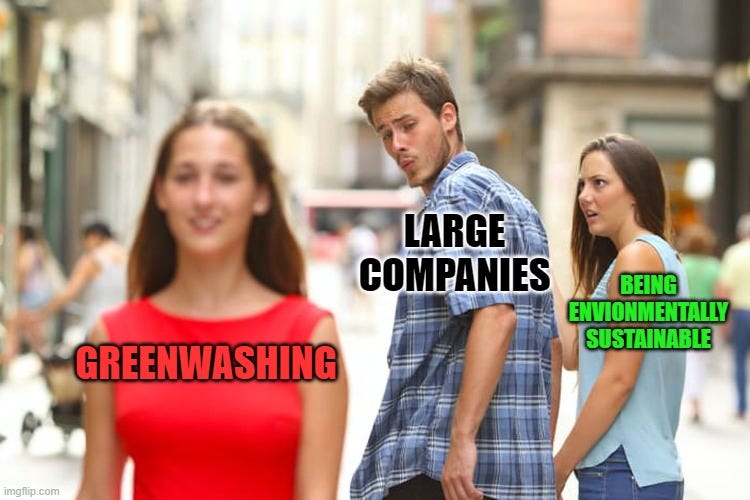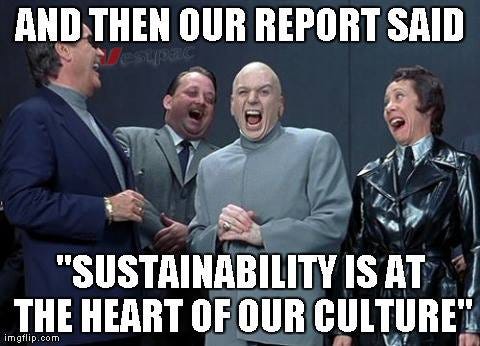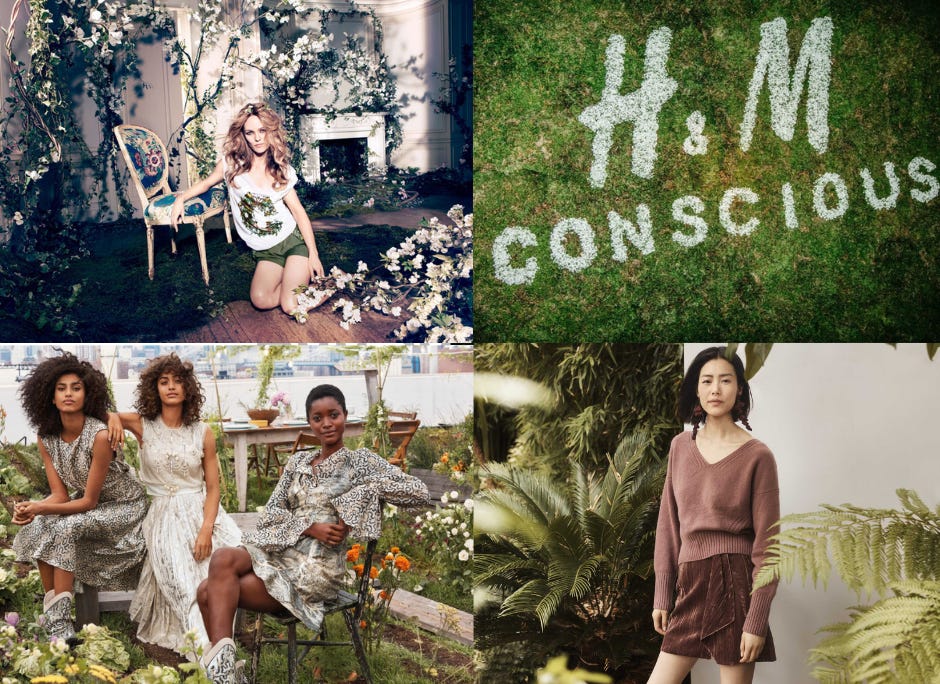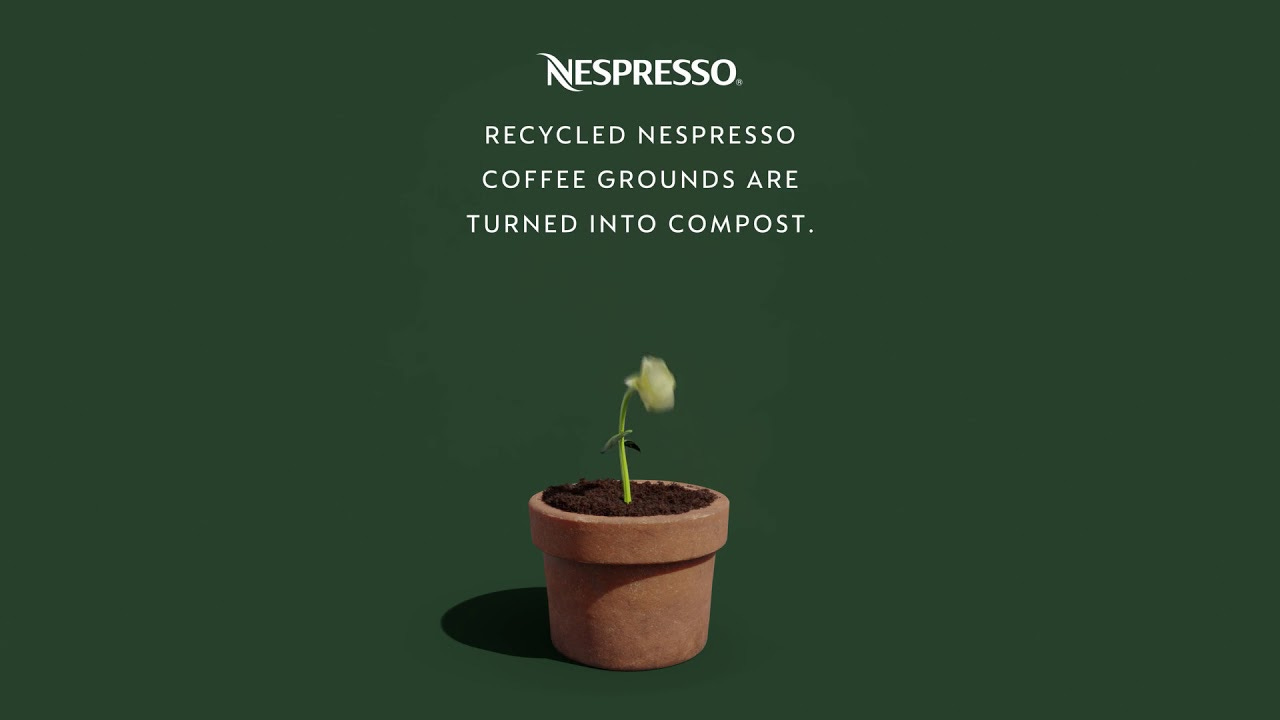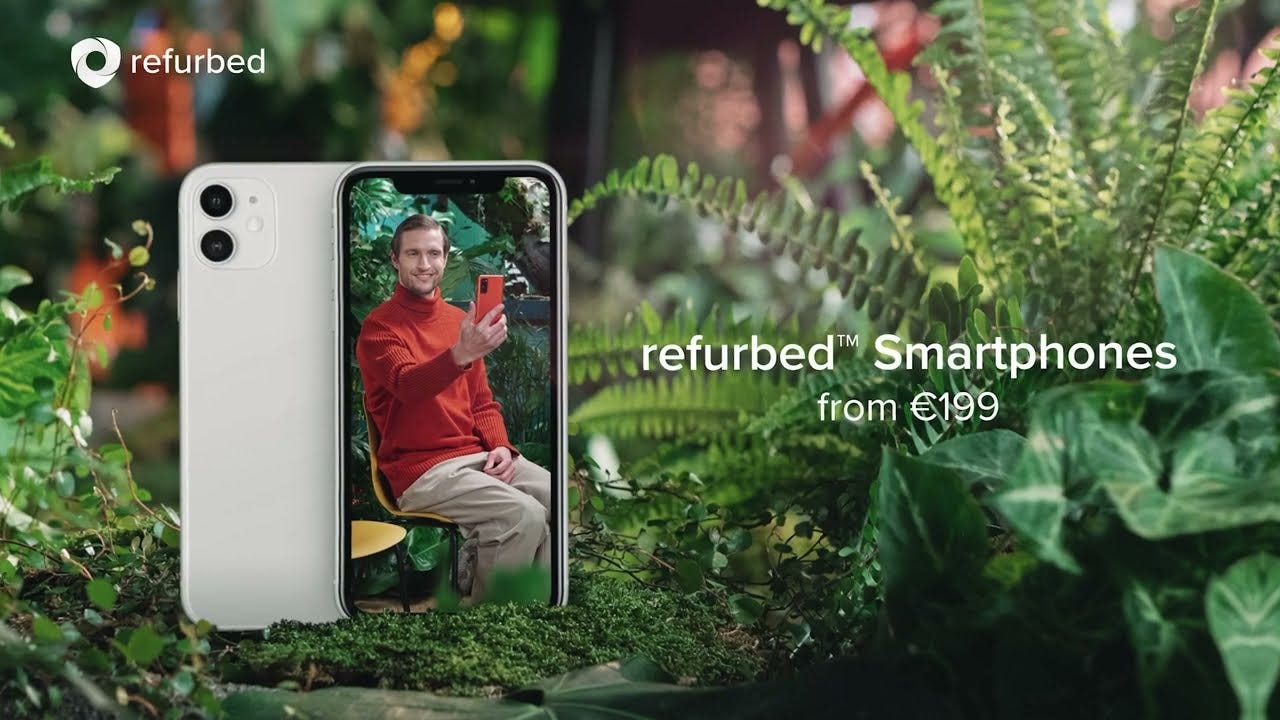🤑 Greenwashing in marketing
What it is, why it's bad, and which brands are "greenwashing."
Hello 👋 My name is Florian Schleicher and this is the FutureStrategies newsletter from FutureS. I'm glad you're reading along 💚 If you want to learn strategic marketing, my Simple & Sustainable Marketing Academy is just right for you.
There are two sides to every coin. Sustainability marketing is no exception.
There is green marketing.
And there is greenwashing.
That's why it's all the more important to do green marketing right and to prevent greenwashing from a brand perspective.
Today I will
explain where the term "greenwashing" comes from and what it means,
burst at least two green brand bubbles we have all been in contact with (sorry, not sorry), and
show with which tactics - unfortunately also by Austrian companies - greenwashing is practiced.
Here we go.
💦 Working at the Towel-Wash
Originally, the term "greenwashing" came from environmental activist Jay Westerveld, who described his 1986 trip to Fiji in a scientific article.
There, he visited a resort where he saw a notice (probably familiar to all of us today) asking customers to reuse their towels after all. The resort claimed this would protect the ocean and reefs, which were the cover of their marketing.
So "Help us, help the environment." Nice idea, right?
But Westerveld also knew that the resort was growing rapidly and building new bungalows without thinking of the consequences. So while the resort was obviously thinking about the environment (and using towels more often is generally good and right, after all), their actions said otherwise.
In other words, greenwashing.
When companies claim to have sustainable products or processes, but there are no real investments or operational actions behind them that are sustainable, we now speak of greenwashing.
In short: Consumers are being deceived.
The consulting firm NOBL has introduced the term "Change Theater" for this purpose:
“Change Theater = activities that give the appearance change is happening, or that change is supported by leadership, without actual traction or meaningful support.”
NOBL
A good example:
In 2001, the oil company "British Petroleum" began its "Beyond Petroleum" re-branding campaign. The irony that 96% of sales still come from oil and gas almost hurts.
“Making big claims, while doing very little.”
John Oliver, Comedian
But even there, it was recognized that a greener image has a lot of potential with consumers and investors.
🤨 Tell me why
And that's because more and more consumers want to buy sustainably.
A paper from Havard University identified that companies can increase their sales by up to 20% by incorporating sustainable measures.
This is because 66% of consumers are happy to spend more money on sustainable products.
In a world where consumers are aware of the problem of the climate crisis and thus also want to adapt their purchasing behavior, but invest little time in researching whether products are really "green", a lot of sales can be made with a little greenwashing.
👕 Underneath your clothes
The NGO Changing Markets Foundation has found that 59% of all green marketing claims made by European and UK clothing manufacturers are misleading. Although there are many promises to reduce one's carbon footprint, many still use synthetic fibers made from petroleum products.
And at the top of the list is a brand we've all shopped at a lot: H&M
A few years ago, the giant launched its own "Conscious Line." Everything is wonderfully green staged and completely natural in look & feel:
But what is behind it?
“H&M are not being clear or specific enough in explaining how the clothes in the Conscious collection are more ‘sustainable’ than other products they sell.”
Bente Øverli, Deputy Director from Norway's Consumer Protection
In a very good article, Tabitha Whiting goes into more detail about H&M and also shows that their recycling initiative has a big catch.
In general, 96% of H&M's claims about sustainability are not verified. Also, their scorecards to rate products are misleading.
H&M knows that sustainability and transparency sell very well right now.
“60% of shoppers in the US, Europe and China want more transparency about the production journey their clothes have been on, so they can make ethical purchasing decisions.”
Another tactic that H&M (and many other companies) use is "carbon offsetting," something whose effect John Oliver describes very well here:
☕️ Greenwashing, what else
On to the next example. And here's a confession to start with: I've loved Nespresso coffee and the brand for a long time.
Sometimes precisely because I didn't know what was happening behind the green scenes.
Because Nespresso and its parent company Nestlé do a really "good" greenwashing job.
Here's the problem in a nutshell (I'm a marketing expert, not a sustainability expert):
Nespresso has coffee in capsules. More precisely: in aluminum capsules.
These are difficult to recycle, require a lot of CO2 in production and cause an estimated 5 million kilograms of waste per year in Germany alone.
And worldwide estimates are made tangible here:
“With a conservative estimate of 14 billion capsules being sold each year, and 0.9 grams of aluminium per capsule, that means 12,600 tonnes of Nespresso aluminium end up in landfill annually, enough for 60 Statues of Liberty.”
🗽🗽🗽🗽🗽🗽🗽🗽🗽🗽🗽🗽🗽🗽🗽🗽🗽🗽🗽🗽🗽🗽🗽🗽🗽🗽🗽🗽🗽🗽🗽🗽🗽🗽🗽🗽🗽🗽🗽🗽🗽🗽🗽🗽🗽🗽🗽🗽🗽🗽🗽🗽🗽🗽🗽🗽🗽🗽🗽🗽
(that was 60 Statue of Liberty emojis).
Since 2015, the company has chosen a worldwide recycling program as its solution. However, on the one hand, the solution to the problem is transferred to the consumers, and on the other hand, only a part is actually recycled:
"There are estimates that at best half of the capsules are recycled through the dual system."
Günter Dehoust, scientist Öko-Institut, Freiburg, Germany
Without going into the various human rights violations now (more about that here), I can say in good conscience: What Nespresso is doing in marketing and with George Clooney as the figurehead is unfortunately exactly what we call greenwashing.
📱 Made in Austria
The next example is not quite so clearly a "bad" company, yet still greenwashing guilty.
Most people know that the production of our beloved electronic products is not sustainable. All the better if they can be recycled, repaired, and reused after use.
This nice idea is implemented by the Austrian company Refurbed.
But as illustrated in this Trending Topics report, the words "100% sustainable" and "100% carbon neutral" were used in advertising.
"It's good to buy used products, but it also gives companies the incentive to overdo it. There's often more promised than is feasible in reality. "
Susanne Einsiedler from the Legal Enforcement Team at the Federation of German Consumer Organisations (VZBV).
This is because the refurbishment of used equipment also produces CO2 emissions and e-waste, as the VZBV explains.
Don't get me wrong - Refurbed is a really good idea to make our world a bit more sustainable. But when sustainable ideas work with absolute terms that are not "100%" true, then again consumers are deceived and marketing is done with exaggerated statements.
🤔 It is just advertising
A few weeks ago, I wrote about the personal responsibility that we as marketeers have around the climate crisis.
But why is it so important for brands to avoid greenwashing now?
1) Legal consequences are imminent. Violations of the prohibition of misleading statements may result in injunctions, contract challenges, or claims for damages. A new EU directive will also bring penalties in the future.
2) The distrust of consumers (because with every greenwashing case uncovered, cynicism will grow) in brands and companies is growing.
“Businesses that greenwash, by design or by accident, are gambling their customers away.”
Amanda Shendruk & Tim McDonnell, journalists at Quartz
In 2022, an Austrian study found that consumers who discovered greenwashing lost a massive amount of trust in the brand.
Consumers are increasingly looking behind the scenes. That's why we have to think carefully about what and how we communicate.
♻️ Always do Marketing on the Green Side of Life (next up)
So how do we avoid greenwashing?
How does strategic green marketing work?
That's what I write about here.
Finally, I have a question this time:
If you enjoyed this post, I recommend:
✅ Green marketing with strategy - What does it take for strategic green marketing and which companies are doing a good job?
🌍🔜 The future is impact marketing - How will sustainable impact on planet, profit & people shape companies in the future and what is impact marketing?
♻️ Green Marketing - About the responsibility that marketing has for our future
PS: You can also read this posting in German.


